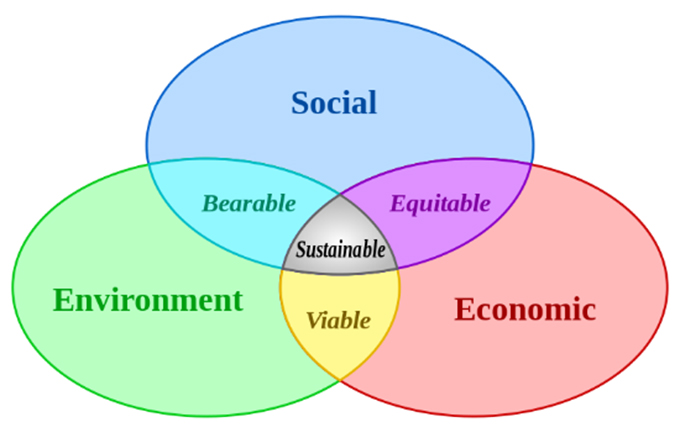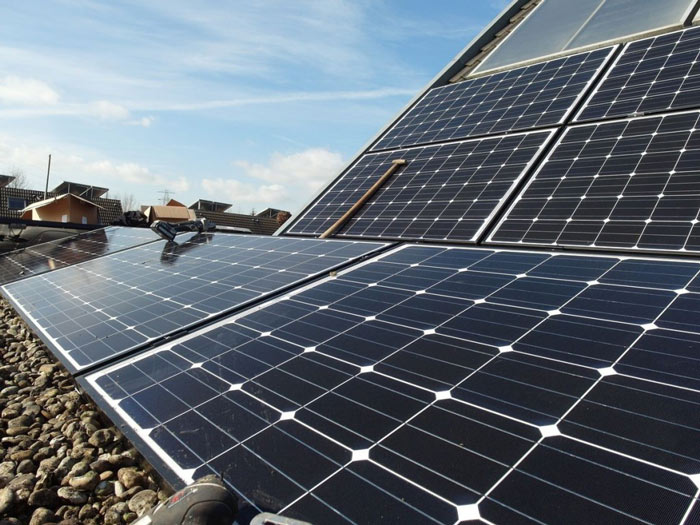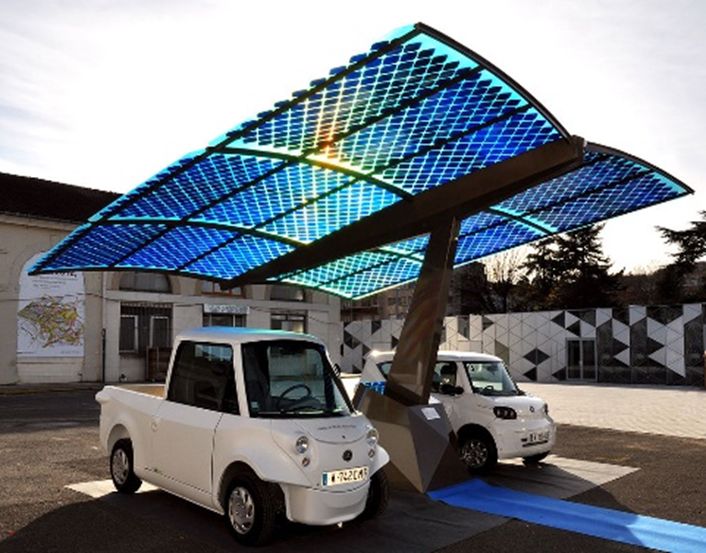Sustainable living has been a buzz phrase for some time now, but not everybody agrees about what it all really means. While most of us agree that it seems to be the right thing to do, there are still some people who remain skeptical or even cynical about the whole process. We are not setting out to convert any “sustainable living deniers”. Instead, we will just present some of the reasons for adopting the fundamental principles of sustainable living and leave the rest to you.
What is sustainable living?

Essentially, sustainable living is a lifestyle choice that aims to reduce how much we rely on the Earth’s natural resources. It is all about minimizing our so-called carbon footprint by making environmentally friendly choices regarding personal transportation, for instance, do we walk, cycle or take the car; energy use, do we use bio-fuels rather than gas to keep us warm in winter; and do we apply it to choosing our diet, such as reducing our consumption of meat products.
How the experts define sustainable living

With such a broad open topic, it isn’t surprising that there are almost as many definitions of the subject as there are commentators:
- Leister Brown, a pioneering US environmentalist, emphasizes renewable energy, recycling, and transportation aspects.
- Derek Jenson, the US author, poet, and environmentalist spokesman goes somewhat further claiming that sustainability can never be achieved by an industrialized society.
- Others take the argument for sustainability into different areas of life. Stella McCartney, the celebrated UK fashion designer, and daughter of ex-Beatle Paul McCartney believe the fashion industry is hugely wasteful, and half of the clothing sent to landfill could and should be recycled.
The industrial pillars of sustainability

To help understand, experts use the three pillars of the sustainability model shown above. These pillars refer to the industrial aspects of society. They are:
- Social: this is generally taken as meaning treating people reasonably (particularly employees), improving the working environment, and ensuring the supply chain doesn’t include exploitation of workers and child labor in foreign countries.
- Environmental: this is all about reducing our carbon footprint by taking steps such as reducing the amount of water we use, reducing packaging materials (particularly plastics), cutting harmful emissions, and so forth.
- Economic: this refers to maintaining profitability but not at the expense of ignoring the other two pillars. This means industries should demonstrate compliance with government regulations, governance, and managing risk. While most US companies adhere to these principles, the same can’t be said for many other nations.
A problem with this is that most organizations focus on just one or two of these pillars. Unless we maintain all three of them, sustainability collapses, as explained in this video:
Personal choices impact sustainability
So much for the big picture. While our opinions and how we vote can and probably does have an impact on the way our nation embraces sustainability and, although maybe to a lesser extent, on global sustainability, our personal choices also matter significantly. Next, we will look at some areas where personal choices really do matter, in particular, housing, power, food, transport, water, and waste.
Housing and sustainability

Globally, housing is responsible for around a quarter of all greenhouse gas emissions. To overcome this, many of us are adopting a sustainable lifestyle that begins with our homes. But what do we mean by a sustainable home? In a nutshell, a sustainable home has a neutral effect on the environment, and we can help achieve this by taking the following measures:
- Using sustainable building materials and work practices. For instance: wood, bamboo, and other materials that are rapidly renewable manufactured using sustainable processes, and transported responsibly. Hemp, cork, natural rubber, natural fiber, reclaimed stone, recycled metal, cellulose insulation, along with many other materials, are also sustainable.
- High-quality insulation is vital to conserve energy far out into the future. The ultimate aim is to eliminate or at least minimize the need for cooling and heating. Windows should be triple glazed using low emissivity glass, roofs should be highly reflective. Alternatively, living or green roofs are also an excellent choice with the added benefit of retaining stormwater and reducing the heat island effect of local communities.
- Water conservation and energy efficiency are both crucial. The latter includes choosing energy-efficient appliances, HVAC equipment, computers, and lighting, while water conservation may include harvesting of rainwater and the reuse of greywater from washing machines and showers.
- Enable residents to adopt green lifestyles. To achieve this, homes should be located close to essential services such as schools and grocery stores, and have access to public transportation.
Energy and sustainability

You can positively impact the environment by generating your own electricity or purchasing power from renewable sources. If you can produce your own electricity, usually you can sell what you don’t need on the grid and receive the usual standard electricity rate for doing so. Typical methods include solar panels, although community projects may involve the construction of solar power plants that concentrate sunlight to run an electrical generator. Alternatively, electricity can be generated using wind turbines if local conditions are appropriate. Biomass burning is another way of generating renewable energy. Typical fuels include wood, straw, manure, used vegetable oil, and biogas. Ideally, you should source these locally. While there are critics of biomass burning who claim that it is polluting as it produces carbon dioxide and sulfur, it consumes equivalent quantities of these during its growth, so mostly it is carbon neutral.
Food
We are what we eat, or so they say, but what we eat also has a massive impact on the planet. In fact, up to 70% of our impact on water resources and 50% of our impact on land resources relates to the food we consume and waste. So why is food production so greedy for environmental resources? The main culprits include:
- Industrial agriculture requires massive irrigation, fertilizers, and pesticides.
- Long-distance transportation – foods are transported by road, sea, and air all over the world at a massive cost to the environment in terms of carbon footprint.
Choose locally grown foods
There is much we can do about this. Personally, I always look at where the food I purchase originates and choose that which is mostly locally grown and produced. For instance, buying from local farmers reduces transportation and benefits your local community. Small-scale farms are much less environmentally damaging than the industrial-sized farms we refer to above.
Choose foods currently in season
In older times we had no choice other than choose foods when they were in season, but today we can obtain just about any food any time of the year. But choosing a diet based on the season is a far more sustainable choice. It also means farmers are less reliant on energy-intensive farming methods. Some of us also believe that choosing a seasonal diet is more natural and better for our health.
Eat less meat

While some people have no problems with a vegetarian or vegan diet, for most of us meat-eaters, cutting out meat isn’t on the menu. Yet we know that meat production is hugely damaging to the environment, producing masses of greenhouse gasses such as methane and requiring vast quantities of water. If we really do believe in sustainable living, we should do our best to at least reduce our dietary dependence on meat.
Grow your own
My grandparents were entirely self-sustaining, growing all their vegetables, keeping chickens and bartering their eggs for meat at a local market, and keeping a pig which provided them with pork and bacon throughout the winter months. While by today’s standards, their lifestyle was modest, they lived healthily and survived into their nineties. Today such a lifestyle is rarely feasible, but many of us can grow some of our own food, and if we don’t need it immediately we can preserve it for another time.
Transport
The automotive industry has done much to increase the efficiency of cars and trucks over recent years. The electric car is also making an impact on pollution levels in cities, though their overall environmental impact isn’t quite as green as it might appear. However, even an electric car that sources all its energy from an oil-fired power station uses only 66% of the energy of a petrol-powered car. A good choice is to trade your car for an electric vehicle and try to power it from a sustainable source of electricity. An even better choice is to cycle which is 50 times more energy-efficient than driving. As a compromise, why not buy an electric bike?

Waste
If we really do care about developing a sustainable environment for our children and their children’s children, we must do something more than we do about dealing with waste. At an individual level, we can do more. This includes:- Reducing waste – we need to reduce plastic waste urgently. Cross plastic straws off your shopping list. Going paperless on all your accounts and subscriptions will have a significant impact on reducing paper waste.
- Reusing items – if it can be reused or repurposed by your family or friends, then make sure it happens. Otherwise, advertise it on Craig’s list or eBay.
- Recycling – this is crucial if we are to reduce what we commit to landfill. Our local waste disposal company claims it recycles up to 90% of waste; others can do so too. It really would make a difference.
Sustainable living can save our planet. Let us know what you think.
